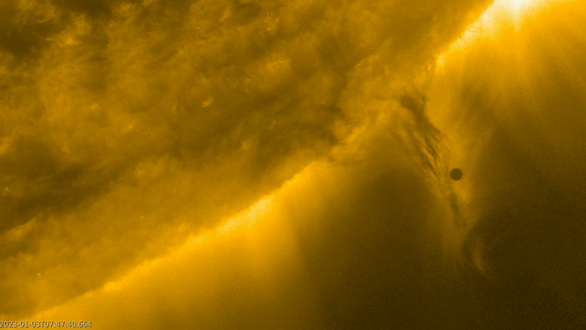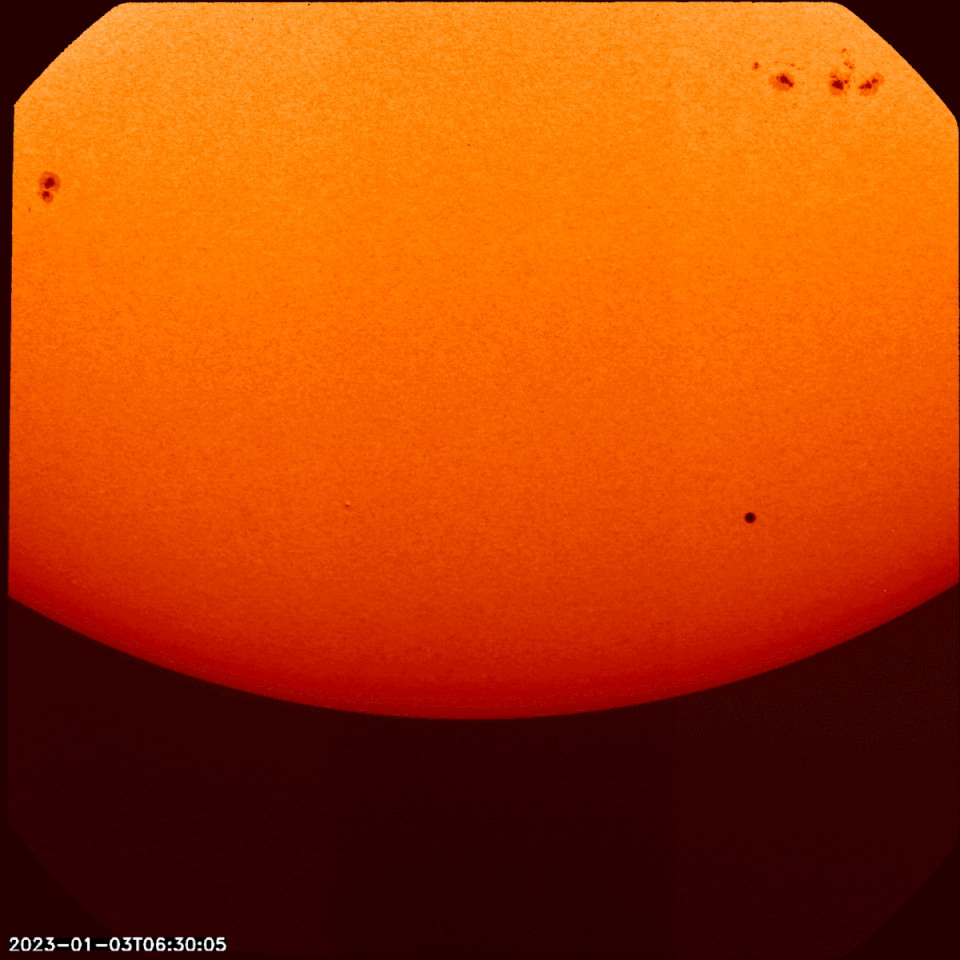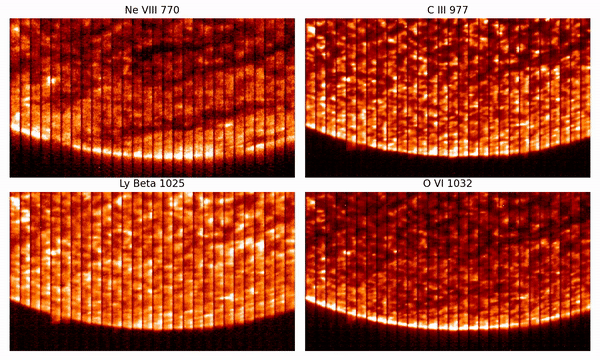Solar Orbiter catches Mercury crossing the sun. Here's the amazing video.

The Solar Orbiter watched Mercury as it crossed the face of its usual observing target, the sun. The transit of Mercury, the closest planet to the sun on Jan 3, 2023, offered the European Space Agency (ESA) spacecraft an opportunity to sharpen its view of the sun.
Several instruments aboard Solar Orbiter caught the transit, including the Polarimetric and Helioseismic Imager (PHI), the Extreme Ultraviolet Imager (EUI), and the Spectral Imaging of the Coronal Environment (SPICE).
In the PHI image, Mercury appears as a black disk on the lower right-hand side of the sun. The tiny black speck is distinct from the dark sunspots visible across the top of the star.
Rather than a still image, Solar Orbiter's EUI instrument filmed a movie of Mercury as it moved across the face of the sun. The tiny planet, the smallest in the solar system, is particularly evident in the footage after it has left the disk when it is framed by the features of the sun's atmosphere.
Related: The sun as you've never seen it: European probe snaps closest-ever photo of our star
SPICE may have got the most revealing view of the sun thanks to Mercury's transit, however. This instrument is designed to split light from the sun into constituent colors, and by doing this it can identify atoms in the different layers of the star as they exist at different temperatures.
"It's not just looking at Mercury passing in front of the sun, but passing in front of the different layers of the [sun's] atmosphere," Miho Janvier, a space physicist at the Institut d'Astrophysique Spatiale in France and SPICE deputy project scientist, said in a statement.
For Solar Orbiter, the transit of Mercury offered a valuable chance to calibrate the instruments.
"It is a certified black object traveling through your field of view," Solar Orbiter Project Scientist at ESA, Daniel Müller, said in the statement. "That means that any brightness recorded by the instrument within Mercury's disc as it transits must be caused by the way that instrument transmits light, a quantity called the point spread function."

The more accurately the point spread function is known, the better it can be accounted for by astronomers and removed from data. That means by studying this transit, the quality of the Solar Orbiter data can be further improved.
The transits of planets have been useful tools for astronomers long before Solar Orbit took advantage of the passage of Mercury. Centuries ago, early astronomers used the passage of the planets in front of the sun to estimate the size of the solar system.
Skywatchers in different widely separated regions would monitor the time of the transit and then compare these timings. Using the slight difference in the times they recorded, the distance between the regions, and basic trigonometry the proto-scientists could then calculate the distance between the sun and Earth.
More recently planetary transits have been used to study planets much further afield, so-called extrasolar planets or "exoplanets" outside the solar system and orbiting stars other than the sun.

Related stories:
— Solar Orbiter to look at Venus' magnetic field as it swings by the planet
— Watch Europe's Solar Orbiter get up close and personal with the sun's corona (video)
— European sun spacecraft spots mysterious switchback that speeds solar wind
By looking for tiny dips in light from these stars, exoplanet hunters can infer the passage of a planet. By then watching as these dips repeat, modern scientists can estimate the orbital period of that planet and its size.
Known as the transit method of exoplanet detection, the technique has become particularly useful in spotting so-called "hot Jupiters" — massive planets so close to their stars that they orbit them in a matter of days.
While Solar Orbiter will use its improved eyesight when it makes its next close pass of the sun in April 2023, in June ESA will get a better look at Mercury as the joint ESA/NASA mission flies by the planet again.
Follow us on Twitter @Spacedotcom or on Facebook.

